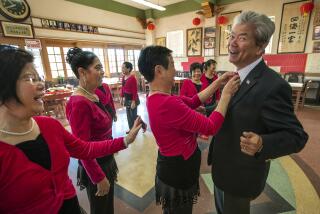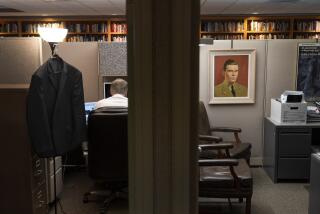Old Crows’ Shrinking Flock : Electronic Warfare Group’s Membership Falls With Defense Cuts
- Share via
Port Hueneme resident Frank Baran will have to sit outside when his professional association of defense workers and military officers holds its annual symposium at Point Mugu Naval Air Warfare Center today.
It’s not that the electronics engineer hasn’t paid his association dues, put in enough volunteer hours or otherwise been an upstanding member.
Rather, like thousands of other defense workers across Ventura County and the rest of the Southland, Baran has lost his job.
And with his job at Teledyne Inc. in Northridge, Baran lost his U.S. government security clearance to hear the kind of secret information that will be discussed at the Assn. of Old Crows symposium.
Like many professional groups, the Assn. of Old Crows--which took its moniker from a World War II code name--gives its members a forum to swap stories, exchange ideas and get a larger perspective on developments in their field.
But unlike other such organizations, Old Crows are downright paranoid about what they share, even with each other, because their field is the secret art of electronic warfare, from jamming enemies’ radar to confounding them with decoy missiles. Founded in 1964, the secretive society based in Alexandria, Va., flourished during the final decades of the Cold War and became influential with U.S. policy-makers.
But with the Cold War’s end, the Old Crows’ flock has shrunk with the nation’s military forces and the defense industry.
Although some laid-off defense workers such as Baran stay active with the group while they pursue other jobs in the field, most drop out.
National membership in the society has fallen 12% to 22,000 over the past several years while the local chapter, the Mugu Crows Club, has shrunk by about 15% to 310 members.
“It’s not like it was in the old days,” Baran said.
Rather than squawk about the declining defense budget, however, the Old Crows are trying to adjust to the new world order.
The association is considering expanding its membership to include defense workers who specialize in information systems, said Karyl Ralles, membership director for the Mugu Crows Club.
And Thousand Oaks resident Arthur Eisenberger, who belongs to the San Fernando Valley chapter of the Old Crows, said some members of the national association want to change the group’s name.
“There are a lot of people who think the name ought to be changed because it’s too flip” for the serious business of electronic warfare, he said.
The name “Old Crows” grew out of the term Raven, the code word for the jamming equipment that the allied forces used during World War II.
Eisenberger said he believes the name should stay. “There’s history involved,” he said.
Even as the organization searches for new members and debates changing its name, Eisenberger and other Old Crows insist that their group and the field of electronic warfare will not become relics of the Cold War.
“We’ll change with the times,” Ralles said. But, “there will always be radar,” he said.
Baran agreed that electronic warfare will remain a high priority of military planners.
“It’s one of the quiet areas of military warfare that most people don’t talk about, don’t even know about it,” he said. But, “the electronic warfare arena has a lot of pull” with policy-makers.
Even when manufacturers of electronic warfare equipment do not have the money to build new radar and jamming systems, they continue to design them, Eisenberger said.
“You need to be ready” for potential future conflicts, he said.
The United States learned during the early years of the Vietnam War how important electronic warfare equipment is in battle, Eisenberger said.
“We lost a lot of airplanes because they did not have jammers available against the missile systems the North Vietnamese had gotten from the Soviets,” he said.
Once jammers were developed and installed in U.S. aircraft, enemy troops’ radar was not able to target planes as easily, he said.
A radar jammer usually works by broadcasting noise on the same frequency as an enemy radar, thereby scrambling the radar’s reading of the size and location of its target.
Besides developing electronic warfare systems, some Old Crows also keep busy during peacetime in what they call listening, tuning in to the communications equipment of potential enemies to decipher what their military forces are up to and what kind of technology they have, Eisenberger said.
And the business of tracking our enemies has become even more difficult now that the Cold War has ended, said Jay Gaudig of Camarillo, an Old Crow who works as an electronics engineer at Point Mugu’s Pacific Missile Test Center.
The spread of arms, including Soviet-built equipment, to Third World countries has created many smaller potential enemies in the place of one monolithic opponent, Gaudig said.
“You used to know where to find the threats,” Gaudig said. “Now you don’t.”
The future of electronic warfare amid a declining military budget is the focus of the symposium today at Point Mugu’s Surfside Center.
A retired Air Force general and representatives from Raytheon and other defense contractors are among speakers scheduled for the daylong event.
More to Read
Sign up for Essential California
The most important California stories and recommendations in your inbox every morning.
You may occasionally receive promotional content from the Los Angeles Times.













